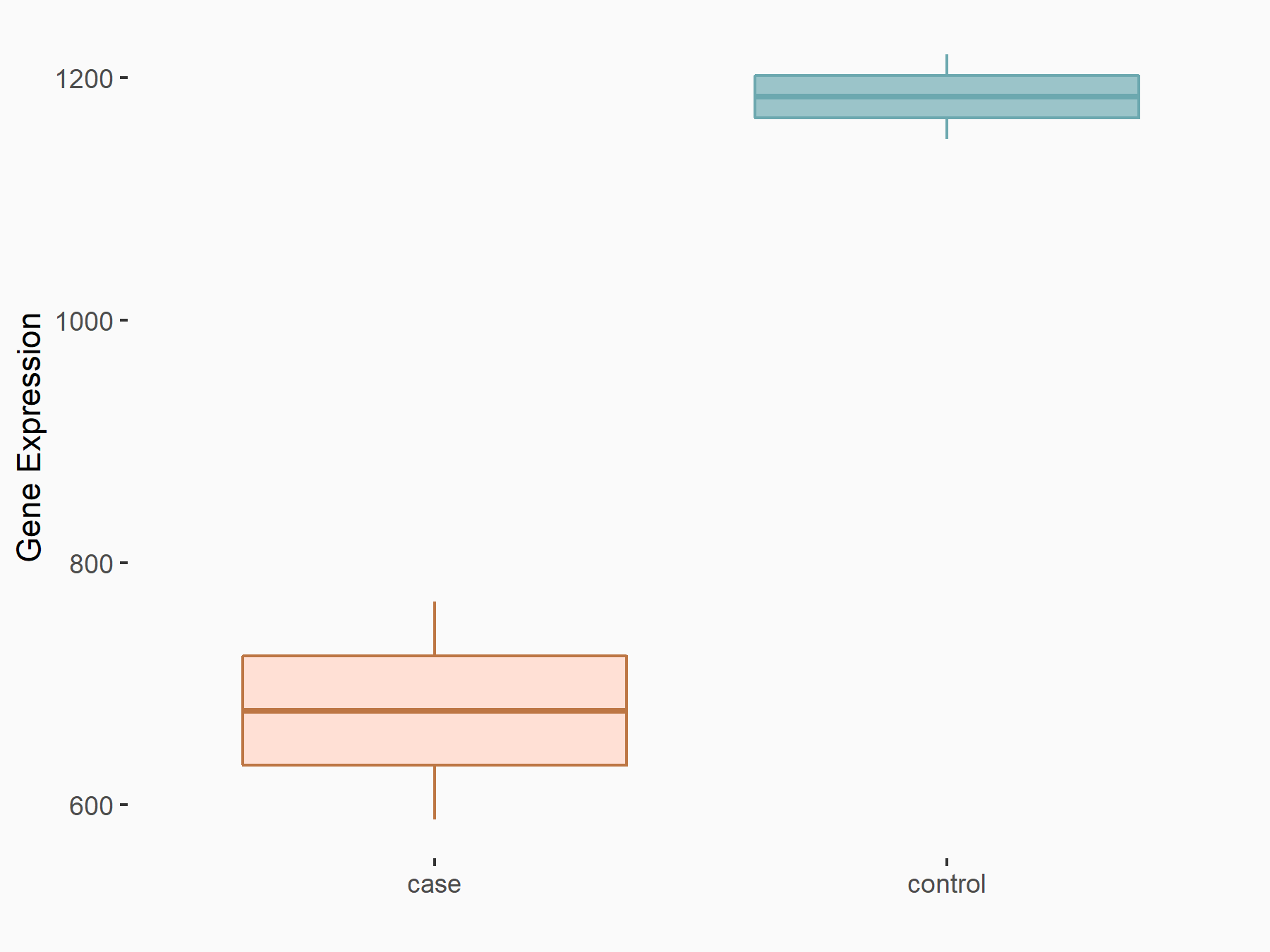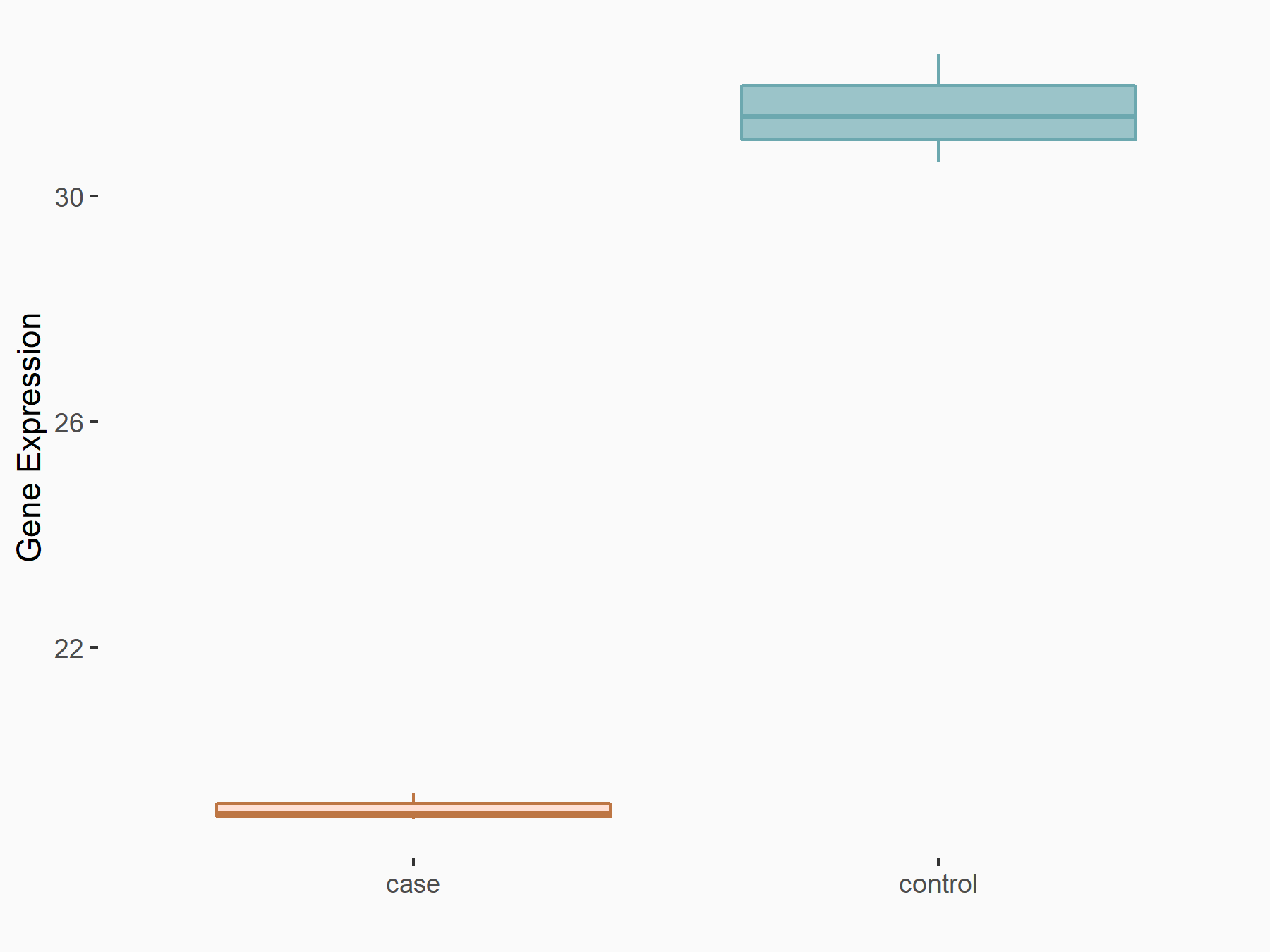m6A Target Gene Information
General Information of the m6A Target Gene (ID: M6ATAR00435)
Full List of m6A Methylation Regulator of This Target Gene and Corresponding Disease/Drug Response(s)
TRAF1
can be regulated by the following regulator(s), and cause disease/drug response(s). You can browse detail information of regulator(s) or disease/drug response(s).
Browse Regulator
Browse Disease
Browse Drug
Methyltransferase-like 14 (METTL14) [WRITER]
| Representative RNA-seq result indicating the expression of this target gene regulated by METTL14 | ||
| Cell Line | MDA-MB-231 | Homo sapiens |
|
Treatment: siMETTL14 MDA-MB-231 cells
Control: MDA-MB-231 cells
|
GSE81164 | |
| Regulation |
  |
logFC: -8.04E-01 p-value: 5.72E-05 |
| More Results | Click to View More RNA-seq Results | |
| In total 1 item(s) under this regulator | ||||
| Experiment 1 Reporting the m6A Methylation Regulator of This Target Gene | [1] | |||
| Response Summary | In renal cell carcinoma, overexpression of TNF receptor-associated factor 1 (TRAF1) promotes sunitinib resistance by modulating apoptotic and angiogenic pathways in a METTL14-dependent manner. | |||
| Target Regulation | Up regulation | |||
| Responsed Disease | Renal cell carcinoma | ICD-11: 2C90 | ||
| Responsed Drug | Sunitinib | Approved | ||
| Cell Process | RNA stability | |||
| Cell apoptosis | ||||
| In-vitro Model | OS-RC-2 | Clear cell renal cell carcinoma | Homo sapiens | CVCL_1626 |
| HUVEC-C | Normal | Homo sapiens | CVCL_2959 | |
| 786-O | Renal cell carcinoma | Homo sapiens | CVCL_1051 | |
| In-vivo Model | For the xenograft tumor model, approximately 1 × 106 ccRCC cells suspended in 100 uL PBS were subcutaneously inoculated in the right flank of 5-week-old BALB/c nude mice. For the ccRCC orthotopic implantation model, approximately 1 × 106 ccRCC cells suspended in 30 uL Matrigel were injected under the renal capsule of 5-week-old BALB/c nude mice. After 6 weeks, the anesthetized mice were intraperitoneally injected with D-luciferin (Yeason) and imaged using an in vivo imaging system to detect tumor growth and metastasis. For the lung metastasis model, approximately 5 × 105 ccRCC cells suspended in PBS were injected into the tail vein of 5-week-old mice. After 6-8 weeks, mice were anesthetized and lung metastasis was imaged as above. | |||
RNA demethylase ALKBH5 (ALKBH5) [ERASER]
| Representative RNA-seq result indicating the expression of this target gene regulated by ALKBH5 | ||
| Cell Line | RPMI-8226 cell line | Homo sapiens |
|
Treatment: shALKBH5 RPMI8226 cells
Control: shNC RPMI8226 cells
|
GSE180214 | |
| Regulation |
  |
logFC: -6.91E-01 p-value: 6.11E-06 |
| More Results | Click to View More RNA-seq Results | |
| In total 1 item(s) under this regulator | ||||
| Experiment 1 Reporting the m6A Methylation Regulator of This Target Gene | [2] | |||
| Response Summary | ALKBH5 promoted multiple myeloma cell growth and survival through TNF receptor-associated factor 1 (TRAF1)-mediated activation of NF-Kappa-B and MAPK signaling pathways. | |||
| Target Regulation | Up regulation | |||
| Responsed Disease | Multiple myeloma | ICD-11: 2A83.1 | ||
| Pathway Response | MAPK signaling pathway | hsa04010 | ||
| Cell Process | Cell apoptosis | |||
| RNA stability | ||||
| In-vitro Model | CAG | Plasma cell myeloma | Homo sapiens | CVCL_D569 |
| RPMI-8226 | Plasma cell myeloma | Homo sapiens | CVCL_0014 | |
| U266 (Human multiple myeloma cells) | ||||
| In-vivo Model | 5 × 105 selected cells were injected via the tail vein into 4- to 5-week-old NCG mice. | |||
Multiple myeloma [ICD-11: 2A83]
| In total 1 item(s) under this disease | ||||
| Experiment 1 Reporting the m6A-centered Disease Response | [2] | |||
| Response Summary | ALKBH5 promoted multiple myeloma cell growth and survival through TNF receptor-associated factor 1 (TRAF1)-mediated activation of NF-Kappa-B and MAPK signaling pathways. | |||
| Responsed Disease | Multiple myeloma [ICD-11: 2A83.1] | |||
| Target Regulator | RNA demethylase ALKBH5 (ALKBH5) | ERASER | ||
| Target Regulation | Up regulation | |||
| Pathway Response | MAPK signaling pathway | hsa04010 | ||
| Cell Process | Cell apoptosis | |||
| RNA stability | ||||
| In-vitro Model | CAG | Plasma cell myeloma | Homo sapiens | CVCL_D569 |
| RPMI-8226 | Plasma cell myeloma | Homo sapiens | CVCL_0014 | |
| U266 (Human multiple myeloma cells) | ||||
| In-vivo Model | 5 × 105 selected cells were injected via the tail vein into 4- to 5-week-old NCG mice. | |||
Renal cell carcinoma [ICD-11: 2C90]
| In total 1 item(s) under this disease | ||||
| Experiment 1 Reporting the m6A-centered Disease Response | [1] | |||
| Response Summary | In renal cell carcinoma, overexpression of TNF receptor-associated factor 1 (TRAF1) promotes sunitinib resistance by modulating apoptotic and angiogenic pathways in a METTL14-dependent manner. | |||
| Responsed Disease | Renal cell carcinoma [ICD-11: 2C90] | |||
| Target Regulator | Methyltransferase-like 14 (METTL14) | WRITER | ||
| Target Regulation | Up regulation | |||
| Responsed Drug | Sunitinib | Approved | ||
| Cell Process | RNA stability | |||
| Cell apoptosis | ||||
| In-vitro Model | OS-RC-2 | Clear cell renal cell carcinoma | Homo sapiens | CVCL_1626 |
| HUVEC-C | Normal | Homo sapiens | CVCL_2959 | |
| 786-O | Renal cell carcinoma | Homo sapiens | CVCL_1051 | |
| In-vivo Model | For the xenograft tumor model, approximately 1 × 106 ccRCC cells suspended in 100 uL PBS were subcutaneously inoculated in the right flank of 5-week-old BALB/c nude mice. For the ccRCC orthotopic implantation model, approximately 1 × 106 ccRCC cells suspended in 30 uL Matrigel were injected under the renal capsule of 5-week-old BALB/c nude mice. After 6 weeks, the anesthetized mice were intraperitoneally injected with D-luciferin (Yeason) and imaged using an in vivo imaging system to detect tumor growth and metastasis. For the lung metastasis model, approximately 5 × 105 ccRCC cells suspended in PBS were injected into the tail vein of 5-week-old mice. After 6-8 weeks, mice were anesthetized and lung metastasis was imaged as above. | |||
Sunitinib
[Approved]
| In total 1 item(s) under this drug | ||||
| Experiment 1 Reporting the m6A-centered Drug Response | [1] | |||
| Response Summary | In renal cell carcinoma, overexpression of TNF receptor-associated factor 1 (TRAF1) promotes sunitinib resistance by modulating apoptotic and angiogenic pathways in a METTL14-dependent manner. | |||
| Target Regulator | Methyltransferase-like 14 (METTL14) | WRITER | ||
| Target Regulation | Up regulation | |||
| Responsed Disease | Renal cell carcinoma | ICD-11: 2C90 | ||
| Cell Process | RNA stability | |||
| Cell apoptosis | ||||
| In-vitro Model | OS-RC-2 | Clear cell renal cell carcinoma | Homo sapiens | CVCL_1626 |
| HUVEC-C | Normal | Homo sapiens | CVCL_2959 | |
| 786-O | Renal cell carcinoma | Homo sapiens | CVCL_1051 | |
| In-vivo Model | For the xenograft tumor model, approximately 1 × 106 ccRCC cells suspended in 100 uL PBS were subcutaneously inoculated in the right flank of 5-week-old BALB/c nude mice. For the ccRCC orthotopic implantation model, approximately 1 × 106 ccRCC cells suspended in 30 uL Matrigel were injected under the renal capsule of 5-week-old BALB/c nude mice. After 6 weeks, the anesthetized mice were intraperitoneally injected with D-luciferin (Yeason) and imaged using an in vivo imaging system to detect tumor growth and metastasis. For the lung metastasis model, approximately 5 × 105 ccRCC cells suspended in PBS were injected into the tail vein of 5-week-old mice. After 6-8 weeks, mice were anesthetized and lung metastasis was imaged as above. | |||
References